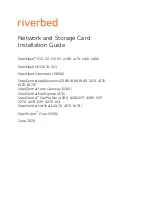
GR740-UM-DS, Nov 2017, Version 1.7
47
www.cobham.com/gaisler
GR740
5.9.3
Generation of synchronization messages and events
The systems first general purpose I/O port supports toggling external signals GPIO(15:0) based on
on-chip events. The PULSE register controlling this functionality is described in section 22.3.11. The
table below gives an overview of the connections:
Note that the connection of the GPTIMER latch disable events and TDP controller datation pulses
allow the system to be configured so that any interrupt in the device can invert the value of the corre-
sponding GPIO lines. In this case the TDP controller and timer unit act as filters since they have mask
registers to select which interrupts, or other event sources, that should cause time to be latched.
5.10
Bridges, posted-writes and ERROR response propagation
The GR740 system consists of several AHB buses connected via bridges. The bridges in the system
make use of posted writes. Write operations on the slave side of a bridge will complete and then the
write operation on the master side of the bridge will be started. In case the write operation then
receives an AMBA ERROR response, this will not be propagated back to the first master since that
write operation has already completed. This means that peripherals capable of DMA and the proces-
sors may perform write accesses to unmapped areas, memory with uncorrectable errors and write-pro-
tected regions without seeing the AMBA ERROR response, which would otherwise cause a processor
to trap or a peripheral to stop processing and assert an interrupt. Instead, write errors need to be moni-
tored using the system’s status registers.
Please note that status register monitoring is an important part of handling EDAC errors in external
memory. See [GR-AN-0004] for further information.
Table 34.
Events that can invert GPIO output
GPIO lines number
Event
0
GPTIMER 0 tick 0
1
GPTIMER 0 tick 1
2
GPTIMER 0 tick 2
3
GPTIMER 0 tick 3
4
GPTIMER 0 tick 4
5
TDP controller CTICK
A pulse is generated when SpaceWire Time-Code is transmitted
when TDP controller is acting as initiator.
A pulse is also generated when a diagnostic SpaceWire Time-Code
is generated when TDP controller is acting as target.
6
TDP controller JTICK
The incoming SpaceWire Time-Code provides an output pulse
when the TDP controller is acting as target, this output is used to
visualize the jitter in incoming SpaceWire Time-Codes.
7
TDP controller datation pulse 0
8
TDP controller datation pulse 1
9
TDP controller datation pulse 2
10
TDP controller datation pulse 3
11
GPTIMER 0 latch disable
12
GPTIMER 1 latch disable
13
GPTIMER 2 latch disable
14
GPTIMER 3 latch disable
15
GPTIMER 4 latch disable
















































